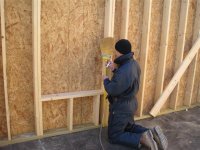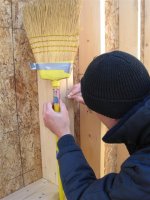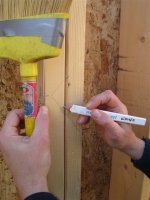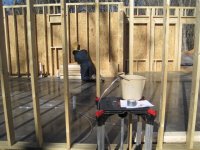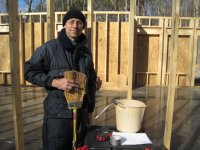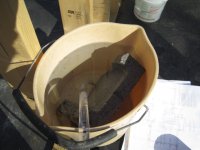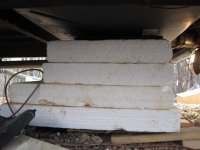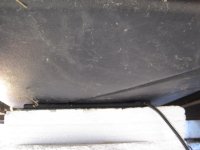Cold Weather Stretch Causing Camper Challenges
The weather forecast is showing we will have at least a solid week with temperatures staying below freezing. The lows are in the low teens with the highs in the mid to upper twenties most days. These temps are colder than normal for this area.
Two days ago, we could tell the water to the camper was trying to freeze by the way the water was coming out of the kitchen faucet (i.e. the water initially came out of the faucet at a trickle but eventually came out at full force as we ran the partially frozen water out of the line). The 100 watt light bulb in the well house had burned out causing the water to start freezing in the well house. Replacing the light bulb fixed that issue. We are dripping the faucets in addition to running a small electric space heater in the camper's storage area where the pipes are susceptible to freezing.
This morning it was 14 degrees F. Our oil-filled electric space heaters could only warm the trailer to 60 F so we turned on the propane furnace. We have had some issues with the furnace in the past so we try not to use it. Fortunately the furnace worked and we were able to warm up the camper.
The biggest problem we are facing is freezing in the black (sewage) tank of the camper. Until the black tank thaws out, we can't use the toilet. For a toilet, we are currently using a chamber pot that used to be our grandmother's. That's how the old-timers did it. That's how my father-n-law grew up in rural Tennessee. Right now, it really does feel like were camping. For winter temps common to this area, hanging a 100W drop light near the black tank normally keeps the valve from freezing and is adequate. The drop light can be seen hanging from the sewage drain pipe in the far-right side of the first picture. However, with the cold weather we're having, I doubt the light is enough. Until the weather gets into the 40's, the black tank contents will never get a chance to thaw without help.
So, I'm attempting a work-around. Living in the camper gives one many opportunities to jury-rig stuff. We have a heating pad that is designed to be used to create a warm bed for pets. Under the black tank, I stacked up some left-over styrofoam that had been used during the concrete wall pour. On the top of the styrofoam I placed the heating pad. I then wedged some boards under the styrofoam to get the heating pad snug up against the black tank. We ran an extension cord and plugged in the heating pad. In the second picture, you can see the black heating pad between the top of the styrofoam and the black tank. Tomorrow evening we'll see if we can dump the black tank. If the heating pad thaws the black tank so it can be dumped, then we can start using the toilet again.
The third picture shows what my wife did to show her gratitude for my working on the black tank in the 15 degree F weather. Blueberry pancakes, biscuits and sausage gravy, and fried apples. All made from scratch. As I type this post, the wife is making a pumpkin pie with homemade pie dough. I sure have a wonderful wife!
Obed
